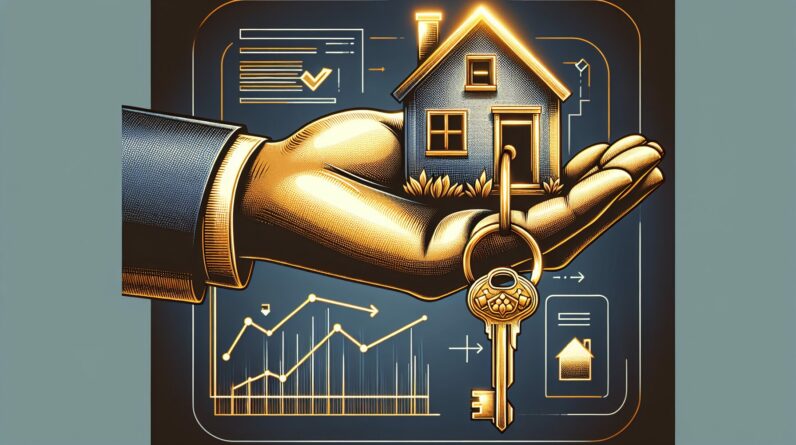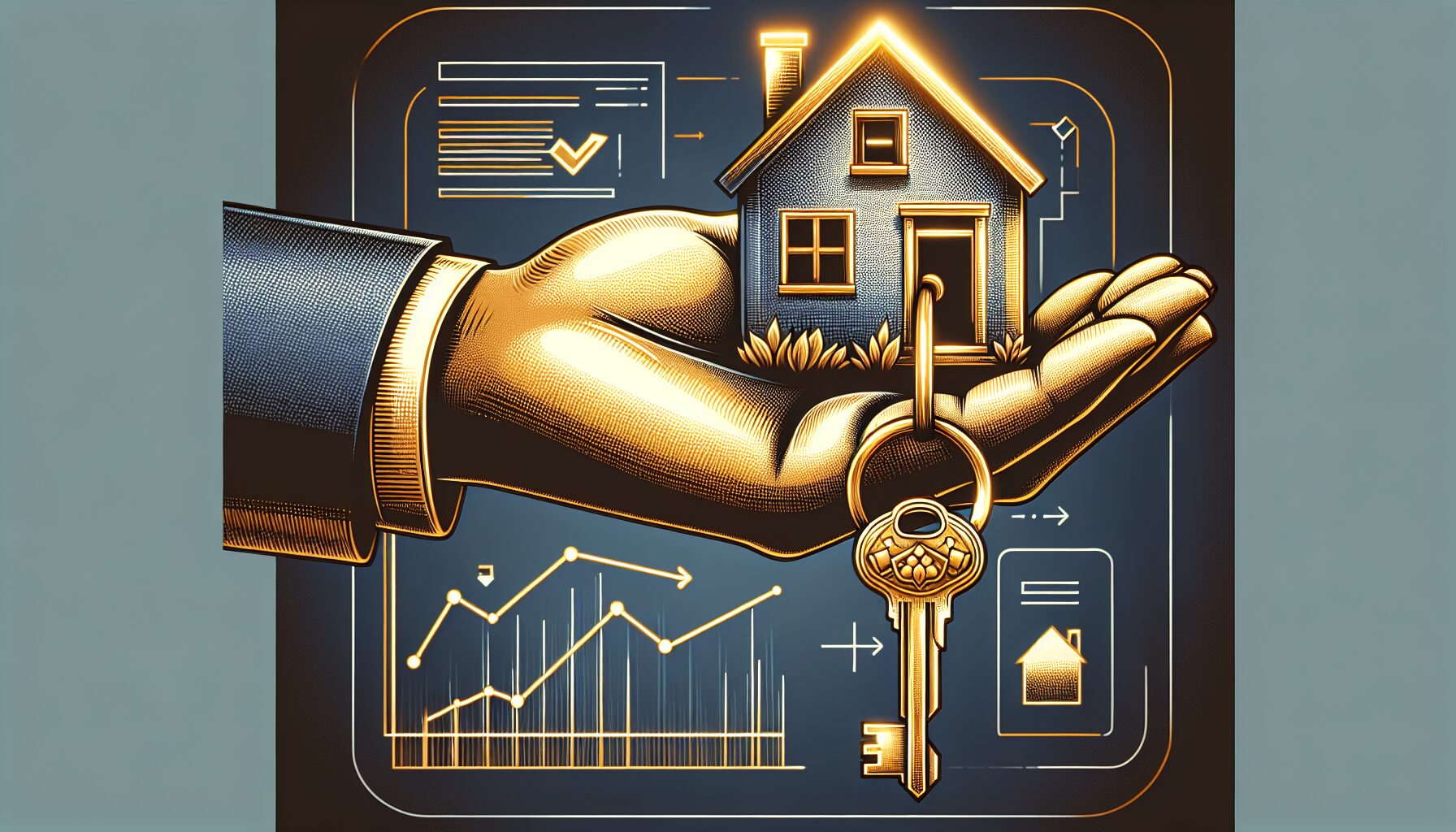
Imagine this scenario: you have finally found your dream home and are ready to make it your own. But, before you can start packing your belongings, there is one crucial thing you need to understand – mortgage loan examples. In simple terms, a mortgage loan example is a way to comprehend how the whole mortgage process works. It gives you a clear picture of the loan amount, interest rate, and repayment period. By understanding this important aspect, you will be better equipped to make informed decisions about financing your dream home. So, let’s dive into the world of mortgage loan examples and unravel the mysteries behind home financing.
Table of Contents
Understanding Mortgage Loans
Definition of a Mortgage Loan
A mortgage loan is a type of loan that is secured by real estate property. It is a financial agreement between a borrower and a lender, typically a bank or a mortgage company. The borrower receives a large sum of money, known as the loan amount, which is then paid back over a specified period of time, called the loan term. In return for providing the loan, the lender charges interest, which is the cost of borrowing the money.
Importance of Mortgage Loans
Mortgage loans play a crucial role in enabling individuals and families to fulfill their dream of homeownership. Most people do not have the funds to purchase a home outright, so they rely on mortgage loans to finance the purchase. By spreading out the cost of the home over several years, mortgage loans make homeownership more affordable and accessible. Additionally, mortgage loans can also be used for other purposes, such as refinancing existing loans or financing home improvements.
Types of Mortgage Loans
There are several types of mortgage loans available, each with its own features and benefits. The most common types include:
Conventional Mortgage
A conventional mortgage loan is not insured or guaranteed by the government. It typically requires a down payment of at least 20%, although some lenders may offer options with a lower down payment. These loans often have more stringent qualification requirements, such as a higher credit score and lower debt-to-income ratio.
FHA Loan
An FHA loan is a mortgage loan that is insured by the Federal Housing Administration (FHA). It is designed to help first-time homebuyers and those with lower credit scores or limited down payment funds. FHA loans usually require a down payment of 3.5% and have more flexible qualification guidelines.
VA Loan
A VA loan is a mortgage loan that is guaranteed by the United States Department of Veterans Affairs (VA). It is available to eligible military service members, veterans, and their surviving spouses. VA loans often offer 100% financing, meaning no down payment is required, and they have more lenient credit and income requirements.
USDA Loan
A USDA loan is a mortgage loan that is insured by the United States Department of Agriculture (USDA). It is designed to help low- to moderate-income borrowers purchase homes in eligible rural areas. USDA loans offer 100% financing and have more flexible qualification criteria.
Jumbo Loan
A jumbo loan is a mortgage loan that exceeds the conforming loan limits set by Fannie Mae and Freddie Mac. These loans are often used to finance high-priced or luxury properties. Jumbo loans generally require a larger down payment and have stricter qualification requirements.
Components of a Mortgage Loan
Principal
The principal is the initial amount of money borrowed in a mortgage loan. It represents the actual cost of the home and does not include any additional expenses or interest. As the borrower makes monthly payments, the principal balance decreases over time.
Interest
Interest is the cost of borrowing money and is charged by the lender in exchange for providing the loan. It is calculated as a percentage of the outstanding principal balance and is typically paid over the term of the loan. The interest rate can either be fixed or adjustable, depending on the type of mortgage loan.
Term
The term of a mortgage loan refers to the length of time the borrower has to repay the loan. It is usually expressed in years, such as 15 or 30 years. The longer the term, the lower the monthly payment, but the more interest the borrower will pay over the life of the loan. Shorter terms result in higher monthly payments but lower overall interest costs.
Down Payment
The down payment is a percentage of the home’s purchase price that the borrower pays upfront. It serves as the borrower’s initial equity in the property and reduces the loan amount. The size of the down payment can vary depending on the type of mortgage loan and the lender’s requirements. A larger down payment generally leads to a lower interest rate and better loan terms.
Closing Costs
Closing costs are fees and expenses associated with the purchase of a home that are paid at the closing of the loan. These costs can include appraisal fees, title insurance, attorney fees, loan origination fees, and more. Closing costs typically range from 2% to 5% of the purchase price and are paid either by the buyer, the seller, or both parties.

Qualifying for a Mortgage Loan
Credit Score
Your credit score plays a crucial role in determining your eligibility for a mortgage loan and the interest rate you will receive. Lenders use credit scores to assess your creditworthiness and ability to repay the loan. A higher credit score indicates a lower risk for the lender and may result in more favorable loan terms. It is important to maintain a good credit history by making timely payments, keeping credit card balances low, and avoiding excessive debt.
Income
Lenders also evaluate your income to ensure that you have the financial means to repay the mortgage loan. They will consider your employment history, salary or wages, self-employment income, and any other sources of income. It is important to have stable and consistent income to demonstrate your ability to make regular mortgage payments.
Debt-to-Income Ratio
Your debt-to-income ratio (DTI) is a measure of your monthly debt obligations compared to your gross monthly income. Lenders use this ratio to assess your ability to manage your debts and make the mortgage payments. A lower DTI ratio indicates a lower risk for the lender and may result in better loan terms. It is recommended to keep your DTI ratio below 43% to qualify for most mortgage loans.
Employment History
Lenders will also review your employment history to ensure stability and consistency of income. They typically prefer borrowers who have been employed with the same employer or in the same industry for at least two years. However, there are certain exceptions for recent graduates or those with unique circumstances.
Down Payment Amount
The down payment amount is an important factor in qualifying for a mortgage loan. Lenders generally require a down payment of at least 3% to 20% of the home’s purchase price, depending on the loan program. A larger down payment can improve your chances of qualifying for a loan and may result in a lower interest rate.
Mortgage Loan Example
Scenario Description
Let’s consider a hypothetical scenario where you are purchasing a home for $300,000. You have a credit score of 750 and a stable income of $5,000 per month. You have saved $60,000 for a down payment and are looking to finance the remaining amount.
Loan Amount
The loan amount is the difference between the purchase price of the home and your down payment. In this example, the loan amount would be $240,000 ($300,000 – $60,000).
Interest Rate
The interest rate is the annual percentage rate charged by the lender for borrowing the money. It is influenced by factors such as your credit score, loan term, and market conditions. Let’s assume you qualify for a 30-year fixed-rate mortgage with an interest rate of 4.5%.
Loan Term
The loan term is the period of time you have to repay the loan. In this example, we will consider a 30-year loan term.
Monthly Payment Calculation
To calculate the monthly payment, we can use a mortgage calculator or a loan amortization schedule. For a $240,000 loan amount with a 4.5% interest rate and a 30-year term, the estimated monthly payment would be approximately $1,216. This includes principal and interest, but does not include taxes, insurance, or other additional costs.

Choosing the Right Mortgage Loan
Fixed-Rate Mortgage
A fixed-rate mortgage offers a stable interest rate and monthly payment throughout the term of the loan. This type of loan is ideal for those who prefer predictable payments and want to lock in a low interest rate for the long term.
Adjustable-Rate Mortgage
An adjustable-rate mortgage (ARM) has an interest rate that can change periodically based on market conditions. ARMs usually have a fixed rate for an initial period, such as 5, 7, or 10 years, and then adjust annually. This type of loan is suitable for those who anticipate selling or refinancing before the rate adjusts and want to take advantage of lower initial rates.
Government-Backed Mortgage
Government-backed mortgage loans, such as FHA, VA, and USDA loans, are insured or guaranteed by government agencies. These loans often have more flexible qualification criteria and lower down payment requirements, making them accessible to a wider range of borrowers.
Jumbo Mortgage
A jumbo mortgage is used to finance high-priced properties that exceed the conforming loan limits. This type of loan typically requires a larger down payment and stricter qualification requirements.
Interest-Only Mortgage
An interest-only mortgage allows borrowers to pay only the interest portion of the loan for a specified period, typically 5 to 10 years. After the interest-only period ends, the monthly payment increases to include both principal and interest. This type of loan is suitable for those who want lower initial payments or expect their income to increase in the future.
Applying for a Mortgage Loan
Documentation
When applying for a mortgage loan, you will need to provide various documents to verify your identity, income, employment, assets, and other financial information. These documents may include pay stubs, W-2 forms, tax returns, bank statements, and proof of assets.
Pre-approval
Pre-approval is an initial evaluation of your creditworthiness and ability to qualify for a mortgage loan. It involves submitting a loan application and supporting documents to a lender, who will then assess your financial situation and issue a pre-approval letter. This letter gives you an idea of how much you can afford to borrow and strengthens your position as a serious buyer.
Loan Application Process
The loan application process involves completing a formal application provided by the lender. You will need to provide personal and financial information, such as your employment history, income, assets, and liabilities. The lender will review your application and supporting documents to determine your eligibility for a mortgage loan.
Processing and Underwriting
Once your loan application is submitted, it undergoes a processing and underwriting phase. During this period, the lender verifies the information you provided, orders an appraisal of the property, and evaluates your creditworthiness. The underwriter assesses the risk associated with lending to you and makes a final decision on your loan application.
Closing and Funding
If your loan application is approved, you will proceed to the closing stage. At the closing, you will sign the final loan documents, pay any remaining closing costs, and officially become the owner of the property. The lender will then fund the loan amount, and you will receive the keys to your new home.

Mortgage Loan Terms and Conditions
Interest Rate
The interest rate is a crucial aspect of a mortgage loan and determines the cost of borrowing money. It is expressed as an annual percentage rate (APR) and can either be fixed or adjustable. Your creditworthiness, loan term, and market conditions can influence the interest rate you are offered.
Amortization Schedule
The amortization schedule is a table that shows the breakdown of each monthly payment over the term of the loan. It includes the principal and interest portions, as well as any additional costs. The schedule also reveals how the loan balance decreases over time and how much interest is paid over the life of the loan.
Prepayment Penalty
A prepayment penalty is a fee charged by some lenders if you pay off your mortgage loan before the agreed-upon time. These penalties are typically a percentage of the outstanding loan balance and are specified in the loan agreement. It is important to review the terms and conditions of the loan carefully to understand if a prepayment penalty applies.
Loan-to-Value Ratio
The loan-to-value ratio (LTV) is a measure of the loan amount compared to the appraised value of the property. It is expressed as a percentage and helps lenders assess the risk associated with the loan. A lower LTV ratio indicates less risk for the lender and may result in more favorable loan terms.
Escrow Account
An escrow account is a separate account held by the lender to pay for property taxes, homeowners insurance, and other related expenses. Each month, a portion of your monthly mortgage payment is deposited into the escrow account, and the lender takes care of paying these expenses on your behalf.
Benefits and Risks of Mortgage Loans
Benefits of Mortgage Loans
- Homeownership: Mortgage loans enable individuals and families to purchase homes and achieve the dream of homeownership.
- Affordability: By spreading out the cost of a home over several years, mortgage loans make monthly payments more manageable.
- Tax Benefits: Homeowners may be eligible for tax deductions on mortgage interest payments and property taxes.
- Equity Building: As you make mortgage payments, you build equity in your home, which can be used for future financial needs.
- Potential Appreciation: Real estate values can increase over time, allowing homeowners to build wealth through property appreciation.
Risks of Mortgage Loans
- Foreclosure Risk: If you fail to make the mortgage payments, the lender may initiate foreclosure proceedings, leading to the loss of your home.
- Interest Costs: Over the life of the loan, you will pay a substantial amount in interest, which increases the overall cost of the home.
- Housing Market Volatility: Changes in the housing market can impact the value of your home, potentially affecting your equity and ability to sell.
- Upkeep and Maintenance: As a homeowner, you are responsible for maintenance and repairs, which can be costly and time-consuming.
- Limited Flexibility: Owning a home restricts your mobility and may make it difficult to relocate for job opportunities or lifestyle changes.
Foreclosure
Foreclosure is a legal process in which the lender takes ownership of the property due to the borrower’s failure to make mortgage payments. It is a last resort for the lender to recover the outstanding loan balance. Foreclosure can have significant negative consequences for the borrower, such as the loss of their home, damage to their credit score, and difficulty obtaining future loans.

Alternatives to Mortgage Loans
Renting
Renting is an alternative to homeownership where you pay rent to a landlord for the right to live in a property. Renting offers flexibility, as you are not tied down to a long-term mortgage commitment. However, renting does not allow you to build equity or benefit from potential property appreciation.
Seller Financing
Seller financing is an arrangement where the seller acts as the lender and provides financing to the buyer. The buyer makes monthly payments to the seller instead of a traditional lender. Seller financing can be beneficial for buyers who may not qualify for a mortgage loan or want to avoid the complexities of traditional financing.
Home Equity Loans
A home equity loan is a type of loan that allows homeowners to borrow against the equity they have built in their property. It is often used for home improvements, debt consolidation, or other major expenses. Home equity loans typically have fixed interest rates and terms, and the loan amount is based on the available equity.
Personal Loans
Personal loans are unsecured loans that can be used for various purposes, including home renovations or repairs. They do not require collateral, such as a home or property, making them accessible to a wider range of borrowers. Personal loans typically have higher interest rates compared to mortgage loans but offer faster approval and disbursement.
Conclusion
Understanding mortgage loans is essential when considering homeownership or exploring financing options for your real estate needs. Mortgage loans provide a path to homeownership, allowing individuals and families to purchase a home while spreading out the cost over time. By considering the different types of mortgage loans, understanding the components and qualification requirements, and evaluating the benefits and risks, you can make an informed decision that aligns with your financial goals and circumstances. Whether you choose a conventional mortgage, FHA loan, or any other type of mortgage, remember to carefully review the terms and conditions, seek expert advice if needed, and choose the option that best suits your needs and preferences.








